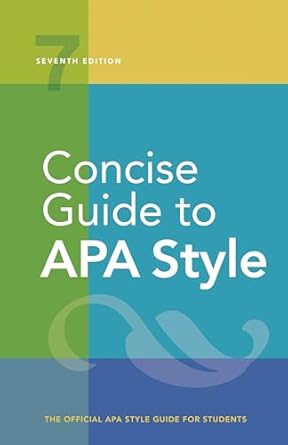[toc]
academic referencing guide examples analysis
Concise Guide to APA Style: 7th Edition (OFFICIAL)
Page 281 Review
A Deep Dive into Academic Referencing: A Review of Selected Textual Works
This analysis delves into a selection of entries from a comprehensive guide to textual works, focusing on specific examples of how to cite different types of publications according to established academic conventions.
We will examine examples ranging from multi-volume works to diagnostic manuals, highlighting key nuances in citation styles.
Multi-Volume Works: Navigating the Complexities
The guide addresses the intricacies of citing multi-volume works, offering clear guidelines for various scenarios.
The first example features “Fiske, S.
T., Gilbert, D.
T., & Lindzey, G. (2010).
Handbook of social psychology (5th ed., Vol. 1).
John Wiley & Sons. https://doi.org/10.1002/9780470561119″.
This entry illustrates how to cite a specific volume within a larger handbook.
Note the inclusion of the edition, volume number, publisher, and DOI.
The parenthetical citation is provided as “(Fiske et al., 2010)” and the narrative citation as “Fiske et al. (2010)”.
The second example, “Travis, C.
B., & White, J.
W. (Eds.). (2018).
APA handbook of the psychology of women: Vol. 1.
History, theory, and battlegrounds.
American Psychological Association. https://doi.org/10.1037/0000059-000″, demonstrates how to cite a volume with its own distinct title within a multi-volume handbook.
The key difference here is the inclusion of the volume title in italics after the main title.
The parenthetical citation is “(Travis & White, 2018)” and the narrative citation is “Travis and White (2018)”.
The guide provides several important notes for citing multi-volume works. “If the volume has both series editors (or editors-in-chief) and volume editors, only the volume editors appear in the author element.” This is crucial for accurately attributing authorship.
Also, “If the volume does not have its own title, include the volume number in parentheses without italics (as in the Fiske et al. example).” This helps distinguish between volumes with and without unique titles.
Finally, “If the volume has its own title, include the volume number and title after the main title in italics (as in the Travis & White example).” These distinctions ensure clarity and consistency in citations.
Books in a Series: Contextualizing the Work
The next example focuses on books within a series: “Madigan, S. (2019).
Narrative therapy (2nd ed.).
American Psychological Association. https://doi.org/10.1037/0000131-000″.
This demonstrates a standard citation for a book, including the author, year, title, edition, publisher, and DOI.
The parenthetical citation is “(Madigan, 2019)” and the narrative citation is “Madigan (2019)”.
However, the guide provides a crucial caveat: “For a series of conceptually related titles, the series title is not included in the reference (this book is part of the Theories of Psychotherapy Series; see Section 9.20).” This highlights the importance of understanding the context of the series and whether the series title is essential for identifying the specific work.
Diagnostic Manuals: Essential Resources for Professionals
The guide also includes examples for citing essential diagnostic manuals.
The first is “American Psychiatric Association. (2013).
Diagnostic and statistical manual of mental disorders (5th ed.). https://doi.org/10.1176/appi.books.9780890425596″.
This entry demonstrates how to cite the DSM, a critical resource in the field of mental health.
The citation includes the author (American Psychiatric Association), year, title, edition, and DOI.
The second example is “World Health Organization. (2019).
International statistical classification of diseases and related health problems (11th ed.). https://icd.who.int/”.
This illustrates the citation style for the ICD, another vital diagnostic tool used globally.
This citation includes the author (World Health Organization), year, title, edition, and URL.
Conclusion
These examples from the textual works guide provide a valuable framework for accurately and consistently citing various types of academic publications.
By adhering to these guidelines, researchers and scholars can ensure the integrity of their work and properly attribute sources.
The detailed explanations and nuances presented in the guide are essential for navigating the complexities of academic referencing and avoiding potential errors.
Buy full ebook for only $18: https://www.lulu.com/shop/american-psychological-association/concise-guide-to-apa-style-7th-edition-official/ebook/product-rmzpq54.html?page=1&pageSize=4

